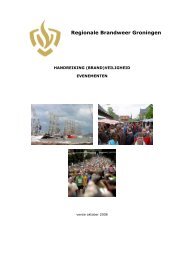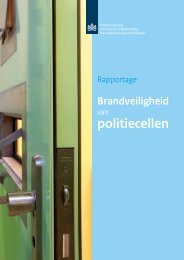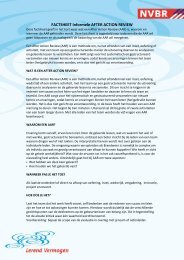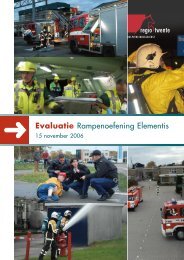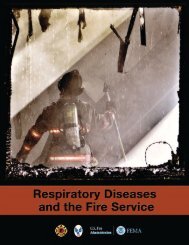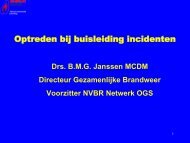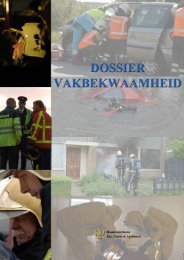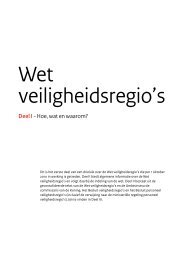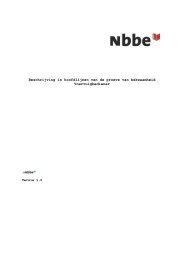Fire ventilation
Fire ventilation
Fire ventilation
- No tags were found...
You also want an ePaper? Increase the reach of your titles
YUMPU automatically turns print PDFs into web optimized ePapers that Google loves.
Pressure differences created by the firea. inhibited thermal expansionb. thermal buoyancy forceAll these pressures are of the same magnitude, which meansthat even very small changes in one pressure can influencethe flow of fire gases significantly.During different types of fires in different types of buildings,with different conditions, one or more of the typesof pressure differences described above can dominate to agreater or lesser degree. A commanding officer about tomake a decision about fire <strong>ventilation</strong>, must therefore picturefor himself which of the pressure differences are themost dominant.In very high buildings with shafts the differences in temperaturebetween the outside and inside air will cause largepressure differences. These pressure differences can be considerable,especially during cold or very warm weather.The wind can have a very large effect on the spread offire gases, both inside buildings and to other buildings,especially in certain geographic locations or at high elevations(high buildings).Comfort <strong>ventilation</strong> can in certain types of buildings,above all those with open or closed supply and exhaust airsystems, cause problems with the spread of fire gases, especiallyif the <strong>ventilation</strong> system stops working.<strong>Fire</strong>s in buildings create pressure differences as a resultof inhibited thermal expansion, i.e. the hot gases expands,and also as a result of the thermal buoyancy force, i.e. hotair rises upwards. In the case of fires where the intensitydevelops rapidly, or fires that spread quickly, these pressuredifferences taken together can be considerable.If the boundary of a fire compartment is defective, or ifthe structure is weakened as a result for example of theimpact of the fire, the pressure differences that arise canfurther weaken the boundary of the fire compartment orthe structure, especially during very intense or rapid firescenarios or at high temperatures.43



